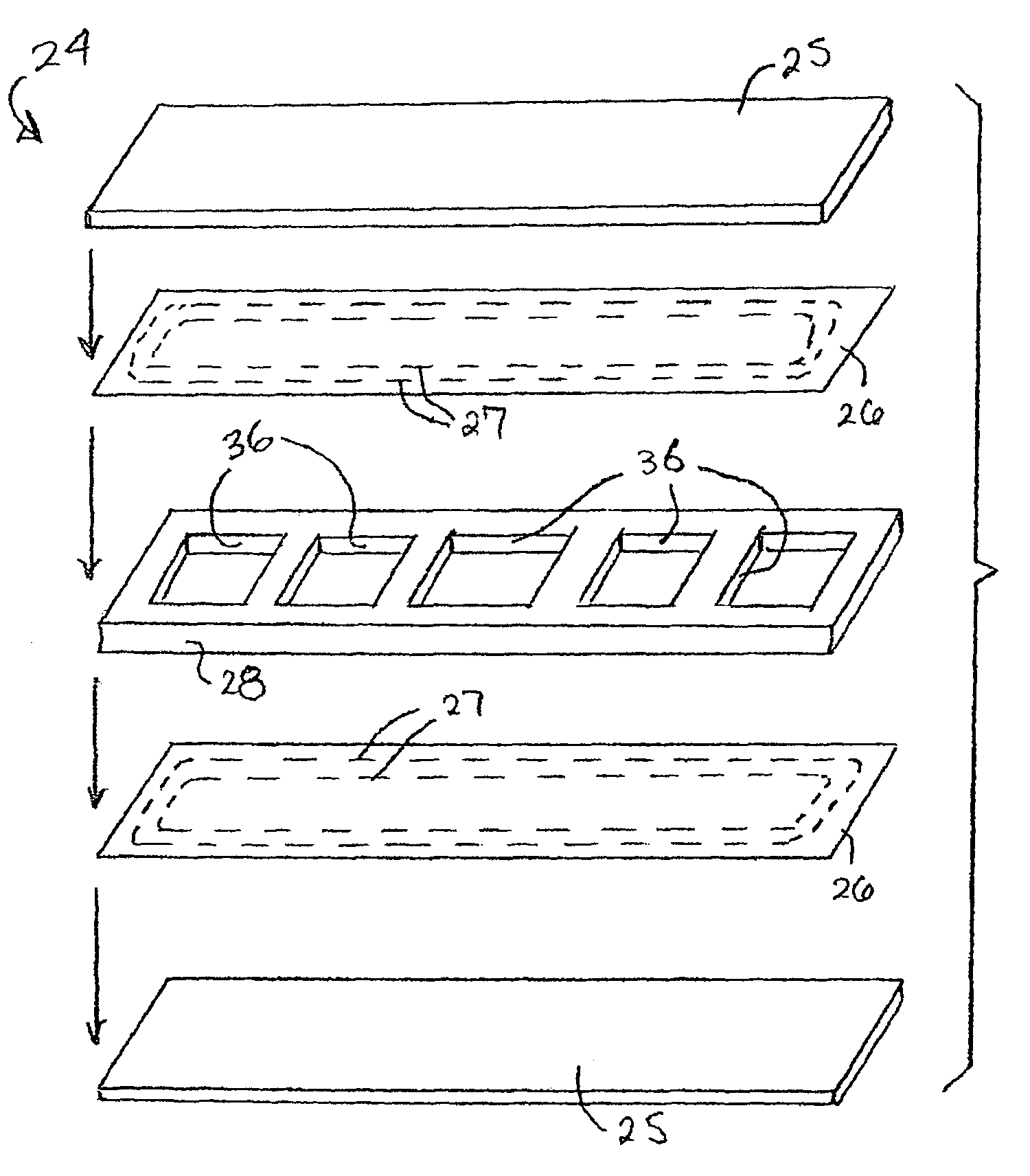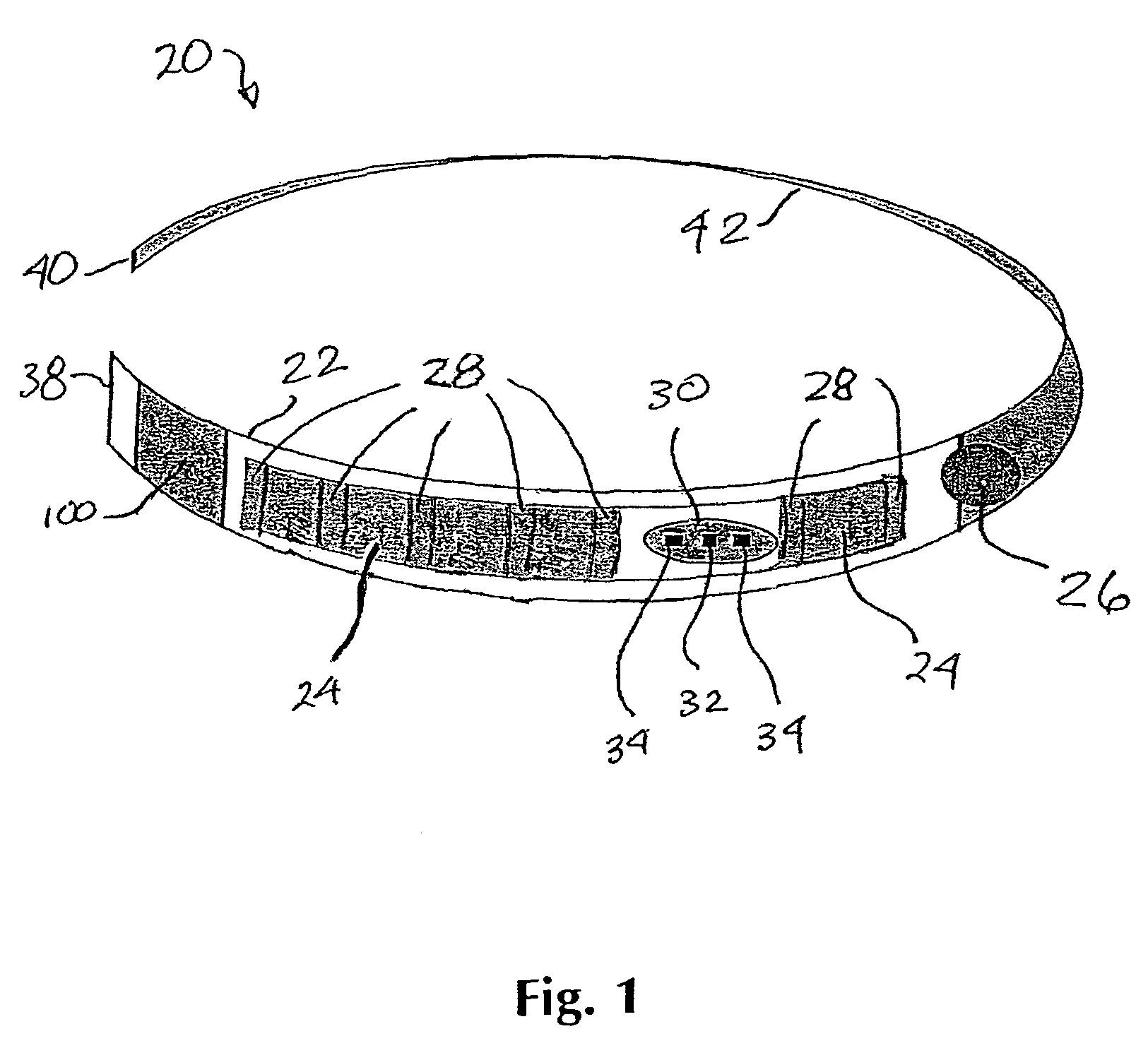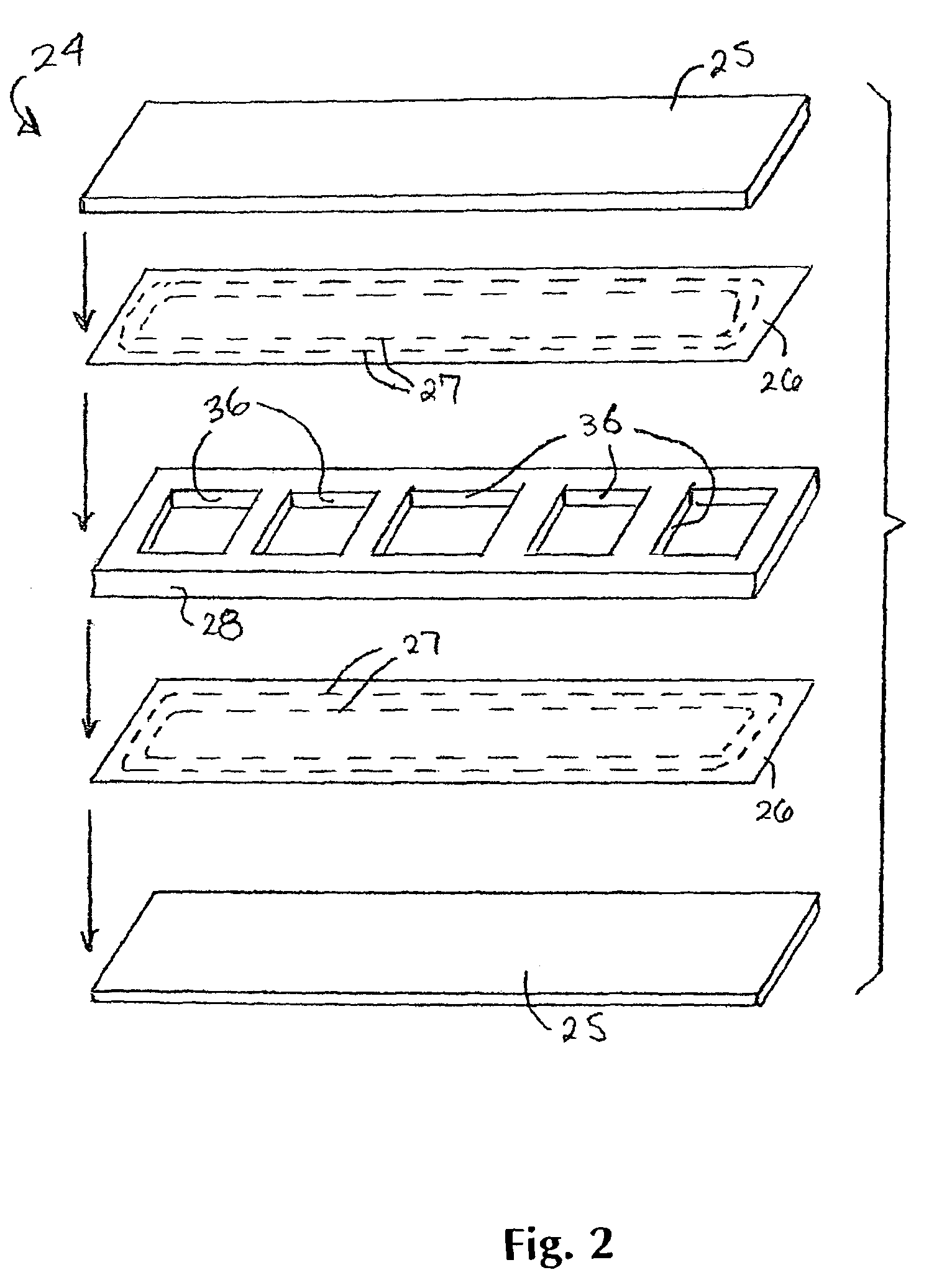Wireless respiratory and heart rate monitoring system
a monitoring system and respiratory and heart rate technology, applied in the field of respiratory and heart rate monitoring systems, can solve the problems of system calibration, discontinuous monitoring of heart rate, and only usable current sensor designs, and achieve the effect of improving light transmission
- Summary
- Abstract
- Description
- Claims
- Application Information
AI Technical Summary
Benefits of technology
Problems solved by technology
Method used
Image
Examples
Embodiment Construction
)
[0027]In describing the preferred embodiment of the present invention, reference will be made herein to FIGS. 1-8 of the drawings in which like numerals refer to like features of the invention.
[0028]The present invention permits the wireless simultaneous physiological monitoring of both heart rate and respiration. This invention employs a sensor configuration that enables the monitoring of respiration with increased sensitivity and the monitoring of heart rate in areas of the body previously unsuitable for the acquisition of heart rate information. Additionally, the incorporation of the preferred heart rate sensor into an inductive plethmography respiration sensor provides for monitoring of the heart rate function at the optimum position for detecting respiration in infants, i.e., the umbilicus locations, since infants are for the most part “belly breathers”.
[0029]A preferred embodiment of the respiratory and heart monitor 20 of the present invention is depicted in FIG. 1. A compli...
PUM
 Login to View More
Login to View More Abstract
Description
Claims
Application Information
 Login to View More
Login to View More - R&D
- Intellectual Property
- Life Sciences
- Materials
- Tech Scout
- Unparalleled Data Quality
- Higher Quality Content
- 60% Fewer Hallucinations
Browse by: Latest US Patents, China's latest patents, Technical Efficacy Thesaurus, Application Domain, Technology Topic, Popular Technical Reports.
© 2025 PatSnap. All rights reserved.Legal|Privacy policy|Modern Slavery Act Transparency Statement|Sitemap|About US| Contact US: help@patsnap.com



